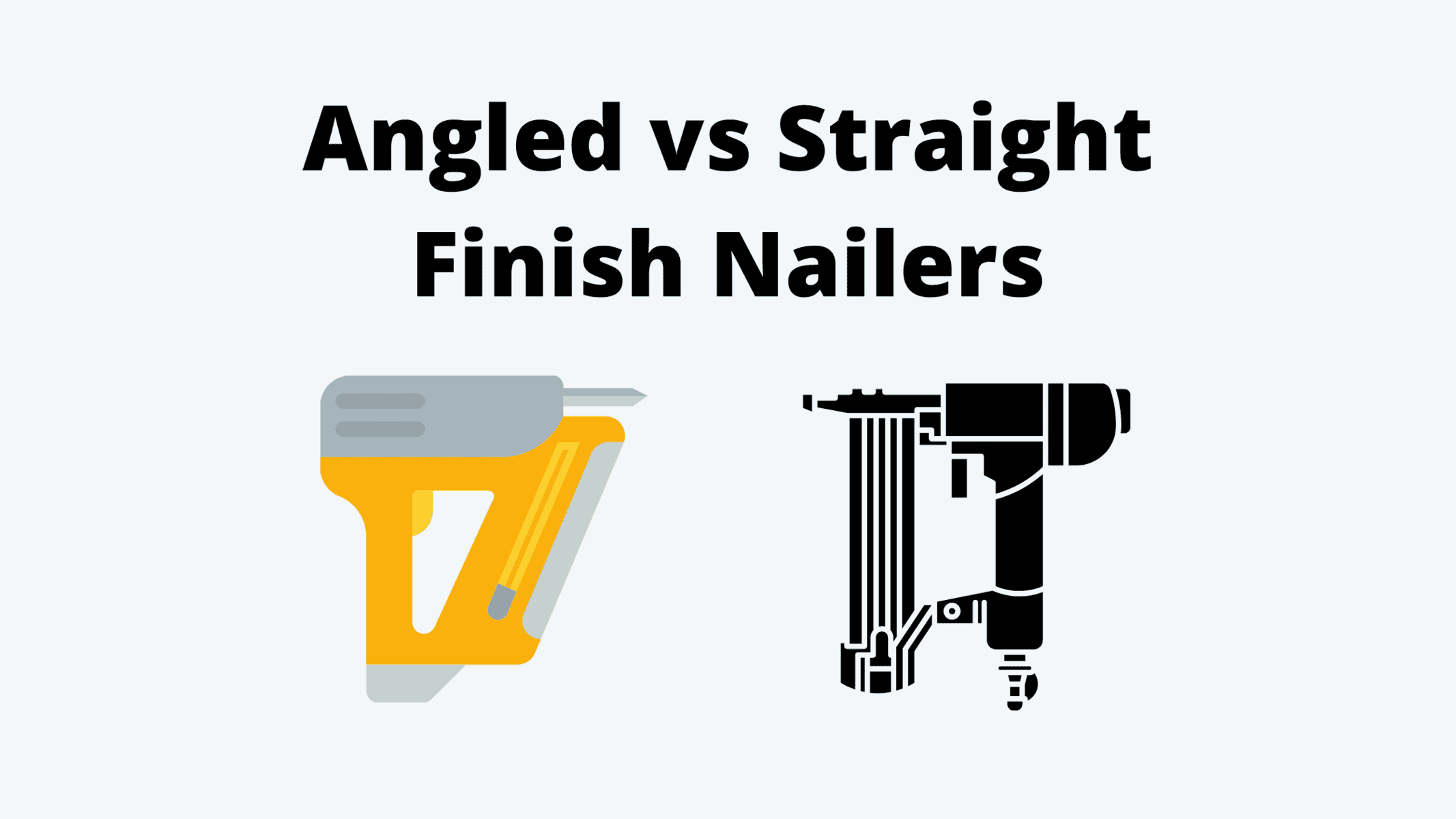Choosing between an angled and a straight finish nailer can be tough. Both have their uses, making the decision important for your projects.
A finish nailer is a key tool for carpenters and DIY enthusiasts. It helps in securing trim, molding, and other woodwork. But, there are two main types: angled and straight. Each has its own set of advantages and drawbacks. Understanding the differences can help you pick the right one for your needs.
This comparison will dive into their features, uses, and which might be best for your next project. Let’s explore the key differences between angled and straight finish nailers to help you make an informed choice.
Introduction To Finish Nailers
Finish nailers are tools used for precise woodworking projects. They help attach trim, molding, and other finish work. These tools provide a clean look. They are faster than using a hammer and nails. Finish nailers come in two types: angled and straight. Each has its own benefits.
Finish nailers are perfect for detailed woodworking. They help with baseboards, crown molding, and furniture. They are also used for building cabinets and stairs. These tools save time. They make the job easier and cleaner. Finish nailers are great for both professionals and DIY enthusiasts.
| Type | Features | Best For |
|---|---|---|
| Angled | Compact, fits tight spaces, holds more nails | Detailed work, corners, small areas |
| Straight | Larger, easier to handle, holds fewer nails | Flat surfaces, larger areas |

Angled Finish Nailers
Angled finish nailers have a slanted magazine. This design helps in tight spaces. The angled shape offers better control. These nailers can reach corners easily. They are great for detailed work. Comfort is another benefit. The angled handle feels good in hand.
Angled finish nailers have several advantages. They fit into tight spots. They are easy to maneuver. Users get better control and precision. They work well on tricky angles. Comfortable grip makes long use easier.
Angled finish nailers come with a few disadvantages. They are often more expensive. The angled design might be harder to find. Heavier compared to straight nailers. They might be less versatile in some tasks. Special nails are needed for angled nailers.
Straight Finish Nailers
Straight finish nailers have a simple design. The magazine is straight. This makes it easy to see where the nail goes. They are easy to use. Perfect for beginners. They work well for detailed work.
- Easy to use and control.
- Great for small, detailed jobs.
- Lower cost than angled nailers.
- Readily available nails.
- Hard to reach tight spots.
- Not good for large projects.
- Bulky design can be awkward.

Credit: www.pinterest.com
Comparing Angled And Straight Nailers
Angled nailers are often easier to use in tight spaces. They can reach corners and edges more easily. Straight nailers are better for open areas. They are simple and straightforward to handle. Both types have their advantages. Choose based on your needs.
Angled nailers provide better precision in tricky spots. They can hit the exact point you aim for. Straight nailers offer consistent accuracy. They are reliable in large, flat surfaces. Both are good, but angled ones are better for detailed work.
Angled nailers are more versatile. They work in different positions and angles. Straight nailers are less flexible. They are best for straightforward tasks. If you need to work in various positions, choose angled nailers. For simple jobs, straight nailers are ideal.
Applications And Projects
Angled nailers are great for tight spaces. They are perfect for corners and edges. These nailers are used in trim work and crown molding. They can reach places straight nailers cannot. Angled nailers offer more control. This makes them ideal for detailed work. They are also good for projects with many angles.
Straight nailers are best for flat surfaces. They are commonly used in furniture building. These nailers are simple and easy to use. They work well for general woodwork. Straight nailers are good for baseboards and paneling. They are efficient for large, open areas. These nailers are also more affordable. They are a good choice for beginners.
Choosing The Right Nailer
Think about the type of project you are doing. For tight spaces, an angled nailer works best. It reaches corners and hard spots easily. For larger surfaces, a straight nailer is good. It covers wide areas fast.
Budget is important. Angled nailers are often more expensive. They are specialized tools. Straight nailers are less costly. They are good for general use. Balance your needs and budget wisely.
Some people prefer angled nailers. They are easier to handle in tight spaces. Others like straight nailers for their simplicity. Think about what feels comfortable in your hand. Try both if possible.
Top Brands And Models
Many brands make quality finish nailers. Some top brands are DeWalt, Bostitch, and Hitachi. These brands have a reputation for durability and performance. Their tools are trusted by many professionals. Makita and Ryobi are also popular choices. Each brand has unique features and advantages.
DeWalt offers the DCN660B model, known for reliability. Bostitch has the N62FN model, which is lightweight. Hitachi provides the NT65MA4 model, known for precision. Makita has the AF635 model, which is versatile. Ryobi presents the P325 model, which is budget-friendly. These models are top-rated by users.

Credit: skilledhub.com
Maintenance And Safety Tips
Keep the nailer clean to ensure it works well. Remove dust and debris after each use. Lubricate moving parts with oil regularly. Check for worn or damaged parts and replace them quickly. Store the nailer in a dry place to prevent rust.
Always wear safety glasses to protect your eyes. Keep hands away from the nail exit point. Use the nailer only on materials it is designed for. Check that the nailer is off before connecting it to a power source. Keep children away when using the tool.

Credit: www.youtube.com
Frequently Asked Questions
What Is Better, An Angled Or Straight Finish Nailer?
An angled finish nailer offers better maneuverability in tight spaces. A straight finish nailer is easier to load and generally cheaper. Choose based on your specific needs.
What Do You Use Straight Finish Nails For?
Straight finish nails are used for trim work, molding, baseboards, and cabinetry. They provide a clean, professional finish.
What’s Better 21 Degree Or 30 Degree Nailer?
A 21-degree nailer offers better holding power and is ideal for framing. A 30-degree nailer provides better access to tight spaces and is lighter. Choose based on your project needs.
Should You Nail At An Angle?
Yes, nailing at an angle can increase holding strength. This method, called toe-nailing, is often used in framing.
Conclusion
Choosing between an angled and straight finish nailer depends on your needs. Angled nailers work well in tight spaces. Straight nailers are great for flat surfaces. Both tools offer unique benefits. Consider your project type before deciding. Think about the angles and surfaces you’ll work on.
This choice will help you achieve better results. Remember, the right tool makes your job easier. Whether angled or straight, both nailers perform well. Choose wisely and enjoy your woodworking tasks.

